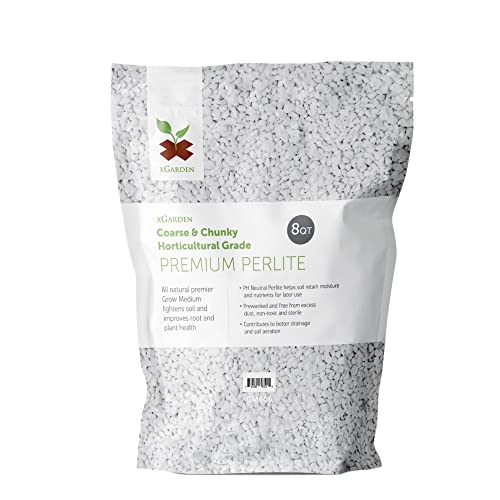Taking on the challenge of rescuing a Bird of Paradise plant is a fulfilling journey that marries the gratification of indoor gardening with the exhilaration of breathing life back into a struggling plant.

Like all living organisms, plants may occasionally falter and require additional nurturing.
This guide, rooted in a TikTok video by groveplanthub, provides an insightful roadmap to rejuvenating a neglected Bird of Paradise plant and restoring it to its natural splendor.
Step-by-Step of Rescuing a Bird of Paradise Plant
The Bird of Paradise is a tropical plant admired for its vibrant flowers.
Beyond its beauty, rescuing such plants is vital as they contribute to our well-being by purifying indoor air.
If you want to get a quick overview of the process before we dig into the details of each step, check out the TikTok video from groveplanthub below.
@groveplanthub PART ONE of the Doorstep Plants 🌿✨🧚♂️ This one was so crazy, the Bird of Paradise really said f*ck a drainage layer!! Catch a sneak peek at the end of the Monstera transformation. The next video will talk about moss polls, when to use them, and which plants need them! 🪴 Stay tuned! ##planttransformation ##fyp##fypシ゚viral##fypシ##plants##houseplants##thingstodoinoregon##pnw##pnwlife##pnwonderland##oregon##plantsoftiktok ♬ Lo-fi hip hop - NAO-K
Here's a detailed step-by-step guide for you!
1. Remove the Plant from Its Pot
The first step was to take the Bird of Paradise out of its pot.
The plant is more complicated than expected in the video because the root system was tightly bound and intertwined with the pot's drainage layer.
The soil appeared to be old, and extracting the plant from its container took significant effort.
2. Inspect the Root System
Once the plant was finally removed, the root system was examined.
The roots had grown through and around the entire drainage layer of the pot, which was quite a surprising sight.
The root system was dense and overgrown, indicating that the plant desperately needed repotting.
3. Save the Roots
Despite the complexity of the root system, the decision was made to save as many roots as possible.
This process was time-consuming and meticulous, involving carefully removing small roots to focus on preserving the larger, more established ones.
This was crucial in ensuring the plant's future health and growth.
4. Observe the Roots
Interestingly, the plant had developed a survival mechanism.
It had squeezed its large roots through the small drainage holes, only to re-establish them as large roots once they had passed through.

This discovery was impressive but challenging, adding complexity to the root preservation process.
It demonstrated the plant's adaptability and will to survive in less-than-ideal conditions.
5. Deal with Root Casualties
Unfortunately, not all roots could be saved, and losing some was an inevitable part of the process.
The focus was to remove the plastic layer entwined with the roots and clear as much old soil as possible.
This was a delicate task, but it was necessary to avoid damaging the remaining healthy roots.
6. Prepare the Plant for Repotting
After the root system was freed from the old pot and soil, it was time to prepare the plant for its new home.
The roots were detangled, and old soil was removed, allowing the plant to breathe and absorb nutrients more effectively.
This step was critical in promoting the plant's future health and ensuring its successful transition to a new pot.
7. Repot the Plant
The plant was then repotted in a slightly larger pot, filled with a soil mix that promotes good drainage.
Additional perlite, charcoal, and earthworm castings were included to enrich the soil and benefit the plant's growth.
Click here to see this perlite on Amazon.
Click here to see this earthworm casting on Amazon.
The new pot was not significantly larger than the previous one, as the Bird of Paradise doesn't prefer too much water, and a larger pot could risk overwatering.
8. Provide Support
After repotting, the plant was supported in bamboo stakes and plant-safe tape.
Click here to see these bamboo stakes on Amazon.
Click here to see this plant-safe tape on Amazon.
This helped the plant maintain its structure without having to bear all of its own weight.
This step was essential as it ensured that the plant was stable and secure in its new environment.
9. Water and Mist the Plant
Once securely staked, the plant was watered thoroughly as the new soil was quite dry.

It was also lightly misted to emulate a more tropical environment, much like the Bird of Paradise's natural habitat.
This final touch helped the plant adjust to its new pot and provided a refreshing and nourishing start in its new home.
The Rewarding Journey of Plant Rescue
The transformation of this Bird of Paradise plant serves as an example of the resilience of nature and the wonders of plant care.
Despite the challenging and tedious process, the result was a healthier, happier plant ready for a fresh start.
Although demanding, the journey of plant rescue offers profound rewards that extend beyond the aesthetic appeal, contributing to both well-being and the preservation of nature.
For more gardening hacks, check out the articles below.
Stylishly Support Your Pothos With This Incredible Copper Wire Hack
Watch How A Broken Pot Became A Stunning Succulent Arrangement




